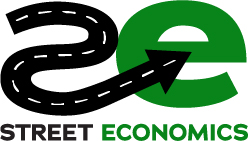Based on the 2024 McKinsey Technology Trends Outlook, the key technology trends that matter most this year revolve around generative AI (gen AI), electrification and renewables, and advanced connectivity. These trends are driven by increased investments, innovation, and growing adoption across industries.
Actionable Insights for Local Governments:
Local governments can capitalize on these trends by focusing on relevant areas that align with their resources, capacity, and goals.
Generative AI (gen AI)
- AI-Driven Urban Planning: Cities can use AI to analyze traffic patterns, optimize public transportation routes, and plan infrastructure projects. AI can simulate different development scenarios, helping urban planners make data-driven decisions.
- AI for Public Safety: Cities can implement AI-based surveillance systems that enhance public safety by analyzing footage for potential threats or predicting areas where crime might occur. AI can also help optimize emergency response times by analyzing historical data.
- AI for Citizen Engagement: Local governments can use AI to improve how they engage with residents, using generative AI to craft personalized communications, answer queries, and provide updates on city projects.
- Data-Driven Economic Development: Cities can leverage AI tools to analyze real-time economic data, identify key trends, and optimize decision-making processes for business attraction and growth. By integrating platforms like Street Economics, which turn municipal data into actionable insights, local governments can pinpoint areas for development, track patterns in workforce and commercial activities, and make informed policy adjustments. This ensures that economic development investment decisions are based on up-to-date market insights, driving sustainable growth tailored to the community’s unique needs.
Electrification and Renewables (excluding solar and wind)
- Geothermal Energy: Instead of solar and wind, cities can explore geothermal energy—using underground heat sources to generate power. It has a much smaller land footprint and can provide reliable, consistent energy.
- Hydroelectric Power: If a city has access to rivers or waterways, small-scale hydroelectric projects can provide a clean energy alternative without the land disturbance that wind and solar create.
- Urban Electrification Programs: Cities can install public electric vehicle (EV) charging stations and transition public transportation fleets to electric buses, which helps reduce emissions without needing solar or wind energy infrastructure.
- Nuclear Microreactors: If and when implementation becomes realistic, smaller, safer nuclear reactors can be used for generating clean energy in cities. They are efficient and require significantly less land than solar or wind farms.
Advanced Connectivity (5G, Wi-Fi 6, etc.)
- Smart Transportation Networks: Cities can implement 5G-connected transportation systems to improve traffic flow, reduce congestion, and create smarter parking systems. Advanced connectivity enables autonomous vehicles, intelligent traffic lights, and real-time traffic management.
- Telemedicine & Remote Education: Providing 5G and advanced Wi-Fi connectivity allows underserved communities to access telehealth services and remote learning, boosting health outcomes and educational opportunities, especially in rural or economically disadvantaged areas.
- Internet of Things for Energy Efficiency: IoT sensors connected via 5G can monitor energy usage in government buildings, public spaces, and homes. This helps cities reduce energy waste, cut costs, and move toward greener, more efficient operations without large land-consuming renewable projects.
Challenges for Cities
Not all cities can immediately capitalize on these trends due to budget constraints or lack of technical expertise. Smaller or resource-strapped municipalities should focus on incremental changes, such as starting with pilot programs, seeking state or federal grants, and creating public-private partnerships to share investment costs.
By focusing on achievable, localized applications of these technologies, cities can gradually enhance their infrastructure and position themselves to attract new businesses and investment




Comments are closed